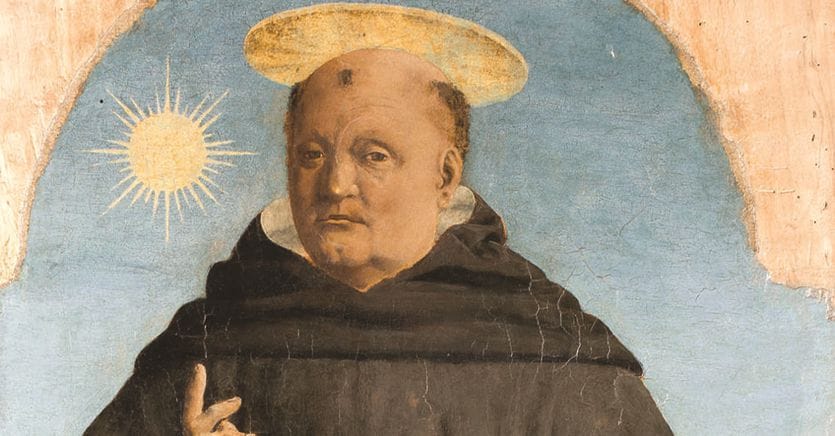Listen to the audio version of the article
March 19th was a day of great celebration at the Poldi Pezzoli Museum in Milan which saw an extraordinary participation of the city in the inauguration of an undoubtedly historic exhibition: the reunion of the eight surviving compartments of the polyptych that Piero della Francesca painted for the church of Hermits of Sant’Agostino in Borgo San Sepolcro between 1454 and 1469, dismembered just one hundred years after its construction. A unique and unrepeatable “meeting” that was possible thanks to collaboration, dialogue and relationships with European and international lending museums.
In the past, attempts had already been made to reunite the polyptych: the Poldi Pezzoli Museum itself in 1996, the Frick Collection in 2013 and the Hermitage Museum in 2018. But, not obtaining all the necessary loans, it was certainly possible to progress the studies but always offering the public a “virtual” reconstruction of the work.
The idea for the Milan exhibition was born in New York last spring: the Frick Collection, which owns four of the eight panels, found itself temporarily closed from March to October for renovations, and at my request said it was generously available to lend it. And thanks to Xavier Salomon, deputy director of the museum, it was possible to start this exciting adventure. On May 31, 2023, the Frick Collection confirmed the loan of Piero’s four panels, which had never left the museum, and this decision activated the rush to involve the other museums that own the other surviving parts: everyone joined the project!
An extraordinary team effort coordinated by the two curators: Machtelt Brüggen Israëls, professor at the University of Amsterdam, and Nathaniel Silver, deputy director of the Isabella Stewart Gardner in Boston, Pierfrancesca scholars of international standing who, initially incredulous given the difficulty of the operation, with great enthusiasm they accepted the task and have guided us this far.
The meeting of the eight panels of the polyptych is a unique and unrepeatable occasion, especially for the purposes of scientific research because it has given rise to a series of in-depth studies which, thanks to diagnostic investigations, have given answers to the questions and solved some mysteries that have surrounded this fascinating and grandiose altarpiece for centuries. It was in fact possible to investigate some important aspects of the history of the polyptych, of Piero’s painting technique, of the materials used, of the wooden carpentry and of the scene that occupied the central panel, unfortunately never found. In particular, thanks to the Bracco Foundation (main partner of the exhibition) and the Bicocca University, cutting-edge diagnostic investigations were carried out on the panel of San Nicola da Tolentino by Poldi Pezzoli: a wonderful work experience conducted in situ which involved the university researchers, the museum team and the two curators of the exhibition.
